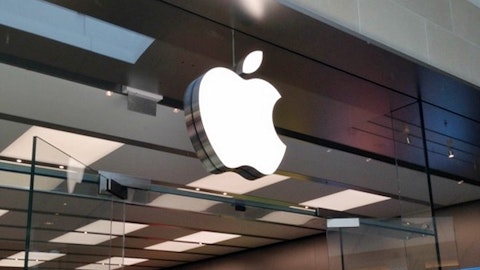Competitive Advantage
Target’s long dividend streak and over a century of company growth show evidence of a strong and durable competitive advantage.
Target’s competitive advantage is a blend of low pricing and a clean, friendly shopping experience.
While Target’s prices are low, they are not lower than its rivals. The company’s main rival is Wal-Mart Stores, Inc. (NYSE:WMT). A recent study shows that Wal-Mart is about 3% cheaper than Target.
This should be expected, as Target does not have the same scale and purchasing power as Wal-Mart. Wal-Mart generates more than 6 times the amount of sales as Target. Click here to see why Wal-Mart’s stock price recently plunged.
Despite its small price disadvantage against its largest competitor, Target attracts a wide audience. Target stores have a cleaner feel than competitors like Wal-Mart, Family Dollar Stores, Inc. (NYSE:FDO), and other discount retail dollar stores. While difficult to quantify, the general branding and feel of Target stores has allowed the company to compete with its larger rival.
Target’s management team is focused on bringing fashionable and in-style merchandise to its stores that appeals to a wide range of consumers.
Growth Prospects
Target Corporation (NYSE:TGT) has compounded earnings-per-share at 5.2% a year over the last decade. The company’s growth would have been significantly faster if management decided not to pursue expansion into Canada and instead used cash from that operation for growth in the United States and share repurchases.
Fortunately, Target is now on the right track. From 2003 to 2012 (before significant Canada expenditures botched growth), Target grew earnings-per-share at 9.0% a year.
Target should be able to continue growing its earnings-per-share around 7% to 9% a year over the next several years as long as the company remains focused on incrementally growing United States offerings.
In addition to earnings-per-share growth, Target currently offers investors a dividend yield of 3%. This yield combined with expected growth gives investors solid expected total returns of 10% to 12% a year going forward.
Recession Performance
Target’s underlying business does not lose much ground during recessions because it is a discount retailer. Consumers still must buy food products and other household goods during times of economic hardship. Target is one of the cheaper retailers to purchase these items, giving it a constant stream of customers in both economic expansions and declines.
The company’s earnings-per-share over the Great Recession of 2007 to 2009, and subsequent recovery, are shown below to illustrate this point:
- 2007 earnings-per-share of $3.33 (new high)
- 2008 earnings-per-share of $2.86 (14% decline off high)
- 2009 earnings-per-share of $3.30 (1% decline off high)
- 2010 earnings-per-share of $3.88 (new high)
As you can see, Target held up well through the Great Recession. The company’s strength through all economic conditions gives dividend investors little risk of a dividend cut.
Valuation & Final Thoughts
Target Corporation (NYSE:TGT) currently has a price-to-earnings ratio of 19.1 (using adjusted earnings). Over the last decade, the company’s average price-to-earnings ratio was 15.8.
Based on its historical price-to-earnings ratio, Target is trading above fair value. The company is trading around fair value based on its solid expected total returns, competitive advantage, and resistance to recessions.
Overall, now is not the best time to buy shares of Target based on how much the company’s price-to-earnings ratio has appreciated versus historical averages.
This shareholder friendly discount retailer is currently a hold using The 8 Rules of Dividend Investing.
Disclosure: None




